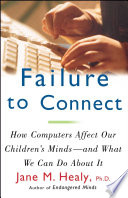

In an era dominated by technology and digital communication, the book emphasizes that genuine human connection remains essential. Despite the convenience of emails, texts, and social media, these forms of communication often lack the emotional depth and understanding that face-to-face interactions provide. The author argues that technology should enhance, rather than replace, human connection. By drawing on research from psychology and sociology, the book illustrates how relationships contribute to our well-being, creativity, and productivity. It encourages readers to seek balance in their digital interactions and prioritize meaningful relationships, highlighting the long-term benefits of investing time in personal connections.
Continue readingEmpathy is a crucial component of effective communication, and the book delves into its significance in both personal and professional contexts. The author discusses how empathy facilitates understanding and collaboration, leading to stronger relationships and better teamwork. Through various examples and case studies, the book illustrates how empathetic communication can resolve conflicts, foster innovation, and enhance leadership. It encourages readers to develop their empathetic skills by actively listening, being present, and acknowledging the emotions of others. The author also provides practical strategies for cultivating empathy in everyday interactions, emphasizing its transformative power in creating a more connected world.
Continue readingWhile technology offers numerous benefits, the book warns against becoming overly dependent on it. The author discusses how excessive screen time and digital distractions can lead to isolation, decreased attention spans, and impaired social skills. By sharing research findings, the book highlights the negative impact of technology on mental health, including anxiety and depression. It encourages readers to reflect on their technology usage and consider setting boundaries to protect their well-being. The author advocates for a more mindful approach to technology, suggesting that individuals should prioritize real-life interactions and engage in activities that foster connection and community.
Continue readingSocial media has transformed the way we connect with others, but the book critically examines its effects on relationships. The author argues that while social media can facilitate connections, it often leads to superficial interactions and a false sense of intimacy. By analyzing various studies, the book reveals how social media can contribute to feelings of loneliness and dissatisfaction. It encourages readers to be discerning about their social media use and to seek deeper connections beyond online interactions. The author emphasizes the importance of nurturing in-person relationships and being mindful of how social media can shape our perceptions of ourselves and others.
Continue readingIn the professional realm, the book underscores the significance of fostering a culture of connection within organizations. The author discusses how strong interpersonal relationships among employees can enhance collaboration, innovation, and overall job satisfaction. By providing examples of companies that prioritize connection, the book illustrates the positive impact on productivity and employee retention. The author offers practical strategies for leaders to cultivate a connected workplace, such as promoting open communication, encouraging team-building activities, and recognizing the value of diverse perspectives. The book emphasizes that organizations that prioritize human connection will thrive in the long run.
Continue readingVulnerability is often seen as a weakness, but the book argues that it is essential for authentic connection. The author discusses how being vulnerable allows individuals to share their true selves, fostering trust and deeper relationships. Through personal anecdotes and research, the book illustrates how vulnerability can lead to greater emotional intimacy and understanding. It encourages readers to embrace vulnerability in their interactions, whether in personal relationships or professional settings. The author provides guidance on how to navigate vulnerability, emphasizing that it is a strength that can enhance connections and create a more supportive environment.
Continue readingThe book concludes with practical strategies for enhancing personal connections in everyday life. The author provides actionable tips for readers to improve their communication skills, deepen their relationships, and create meaningful connections. These strategies include practicing active listening, being present in conversations, and expressing gratitude. The author also emphasizes the importance of prioritizing quality time with loved ones and engaging in activities that foster connection. By implementing these strategies, readers can cultivate a more connected and fulfilling life, both personally and professionally.
Continue reading